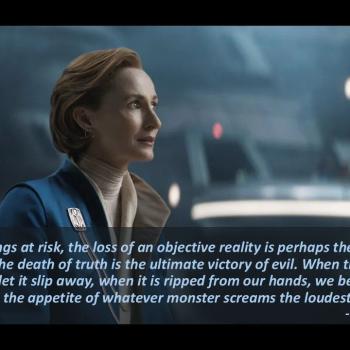I am once again teaching two very different groups of students. The class is the same: RL 202 The Bible. One is from 10-10:50am and one is from11-11:50am. Both are in the same room, and have the same syllabus.
The biggest difference between them? The worldview that the majority in each group seems to share. The reading for today’s class was the first three chapters of Marcus Borg’s Reading the Bible Again For the First Time: Taking the Bible Seriously But Not Literally. In both classes the reading served as a good discussion starter, but one class found Borg’s own views helpful while the other’s reaction was much less positive.
Here’s one of the illustrations I use to try go help students understand why historians feel unable to reach positive conclusions about miracle stories. I ask them to imagine that someone in their dorm is pregnant and claims that there is no other human parent. (I assume the dorm in question is not a male-only dorm; otherwise, most of us would accept that something rather miraculous has occurred!). What evidence would they require in order to be persuaded that the individual in question was telling the truth? And if (as is inevitably the case) they don’t find that there is any evidence that would allow them to feel certain a miracle had occurred even though today they might cross-examine witnesses or do DNA testing, then how could any historian conclude that the most likely reason we have miracle stories from 2,000 years ago is that a miracle actually occurred?
In one class, if I simply stated that the miracle stories in the Bible were true, there would be responses of acceptance but also of skepticism. In the other, it is unlikely that anyone would bat an eyelid. There is what I can only call a culture of credulity. This is not the same thing as faith. Surely there is nothing intrinsically meritorious about accepting astounding claims on the basis of inadequate evidence.
I suppose the big question is how to instill critical thinking in a postmodern generation that is already aware of the problems of claims to certainty, even those made by science and reason. How do we critique the modern, without abandoning all of the insights it has given us, and without falling back into superstition and gullibility?












